First Impression: 2018 WR250F
Three years back, when Yamaha’s new-generation, fuel-injected WR250F was first released, we promptly put one on Transmoto’s project bike fleet. And that 2015-model WR250F proved to be one of our favourite bikes of all time. Based on the all-conquering YZ250F, it was light and agile and powerful for a quarter-litre enduro bike, and a whole lot of fun to ride. And it made its predecessor feel pretty pedestrian. For 2016 and 2017, the WR250F got very little in the way of upgrades. But for 2018, Yamaha gave it a bunch of mods that had been introduced to its MX cousin the previous year. On paper, that gave the 2018 WR250F a 15% boost in power, more progression in its KYB suspension, and improved braking power.
So, do those claims at the brochure ring true? In short, yes. As we reported a few months back when the much-revised 2018-model WR250F was launched, the 2018 bike makes a noticeable step forward, particularly with the breadth and responsiveness of its power delivery. And power is a very important part of the equation with quarter-litre dirt bikes. But what else stands out about this revamped little 2018 WR250F? Well, seeing as we’ve had both a 2015 and 2018-model WR250F on Transmoto’s project bike fleet, we’re well placed to answer that question. Sadly for me, Transmoto’s Brian Vegh has claimed the 2018 WR250F as his very own, but he was magnanimous enough to ‘grant’ me a couple of decent trailrides on the machine – just enough seat-time to itemise the improvements I found most noticeable…
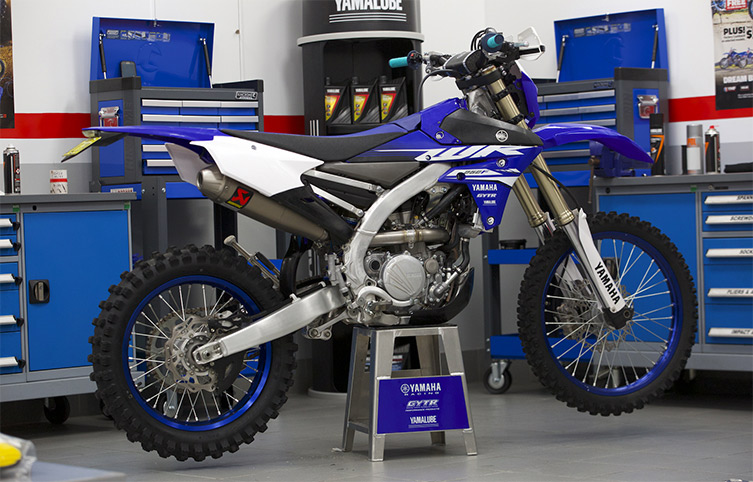
1. POWER DELIVERY
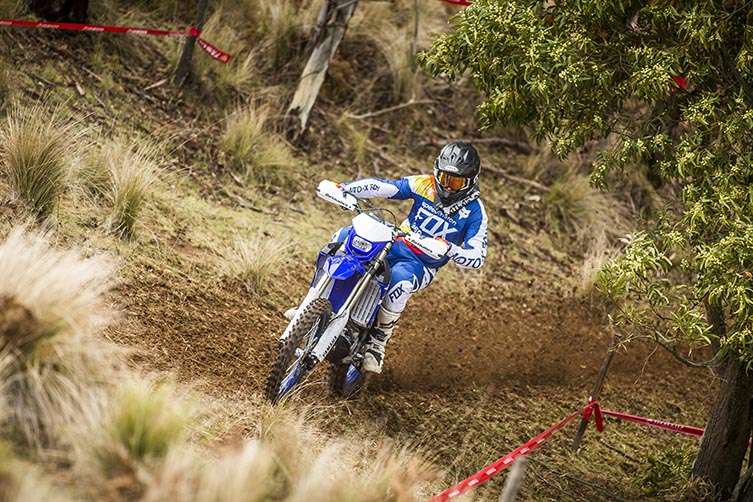
The 2018 engine might not look much different from the outside, but it’s a very different animal. Featuring mods to piston, valves, head, crank, exhaust and mapping, the updated powerplant is unquestionably stronger. With better throttle response and torque, it’s got a much livelier character (in fact, it’s much like the 2017 YZ250FX, which copped these engine mods a year ago). The 2018 WR250F is happier to be short-shifted and chug up hills at low revs, but still pulls hard at high RPMs. In short, it feels like it’s now packing more cubes, and is more versatile and forgiving, particularly for riders in the 85kg+ weight range. It’ll be a better platform for Pro racers, too.
2. SUSPENSION
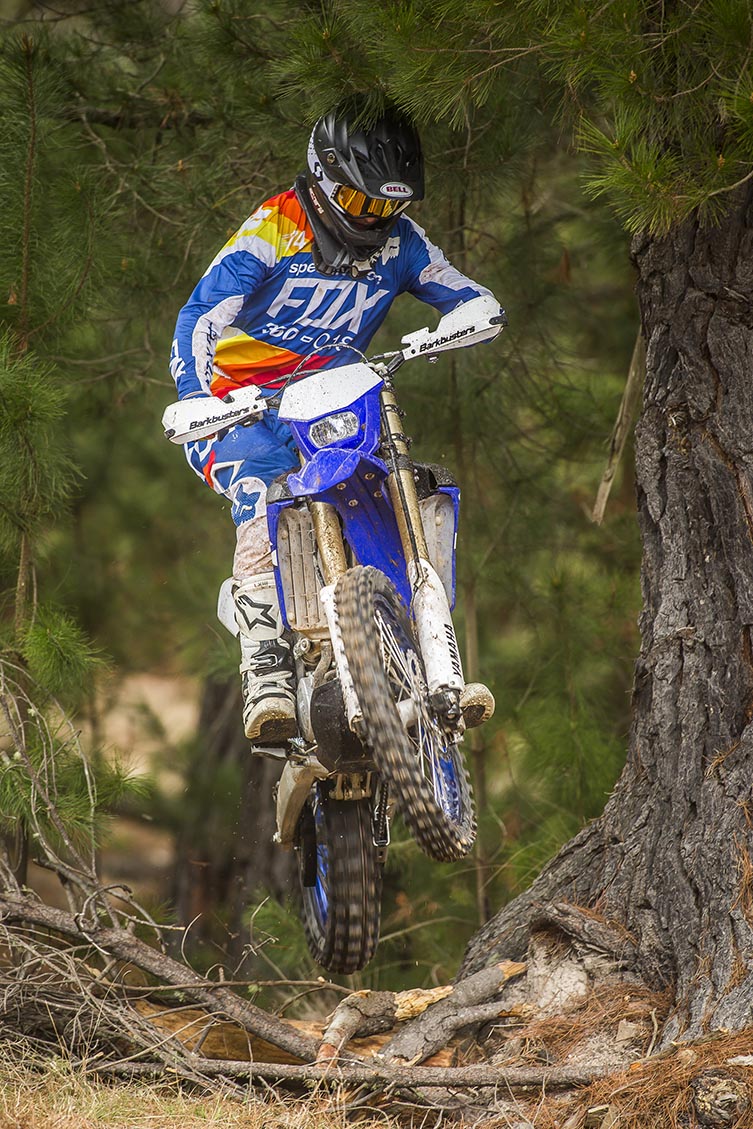
With only subtle mods to frame and swingarm for 2018, it’s hard to notice a lot of difference in the feel of the chassis. The Kayaba suspenders still deliver the same super-plush ride over small bumps, and good bottoming resistance. And it still turns well and offers heaps of feel for front-end traction. But, just like its predecessor, the 2018 bike is most notable for how sure-footed and planted its chassis feels over all sorts of terrain. It’s incredibly resistant to being kicked off-line, and it tracks unbelievably straight through gnarly, loose rock gardens. And that’s exactly why this machine appeals so much to average sit-down trailriders, and to Pro racers who push the chassis to its limit. Like its predecessor, though, the fork finds its limits in the hands of a fast Pro rider who’s over 80kg before the shock does. With the same spring rates as the 2015-2017 models in both its fork (0.44N/mm) and shock (5.4N/mm), the 2018 chassis still feels like it’s rocked forward (an intentional design to put more weight on the front wheel, and ensure the bike steers well), but the revised valving specs for 2018 (and other small mods made to the fork) do improve the chassis balance and bolster the fork’s resistance to bottoming.
3. AGILITY
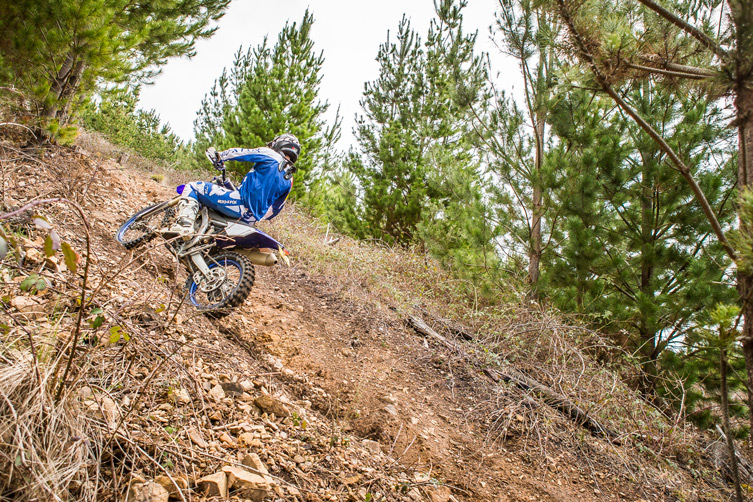
The move from the full-wrap hand guards to Barkbusters’ lighter VPS hand shields for 2018 gives the 2018 bike’s handlebars a much lighter feel in your hands, and that translates into a bike that flicks from side to side with noticeably less rider input. This added flickability is amplified by the new headlight and surround (that Yamaha has finally seen the sense in rubber-mounting), which is lighter and sits flusher against the triple clamps.
4. PROTECTION
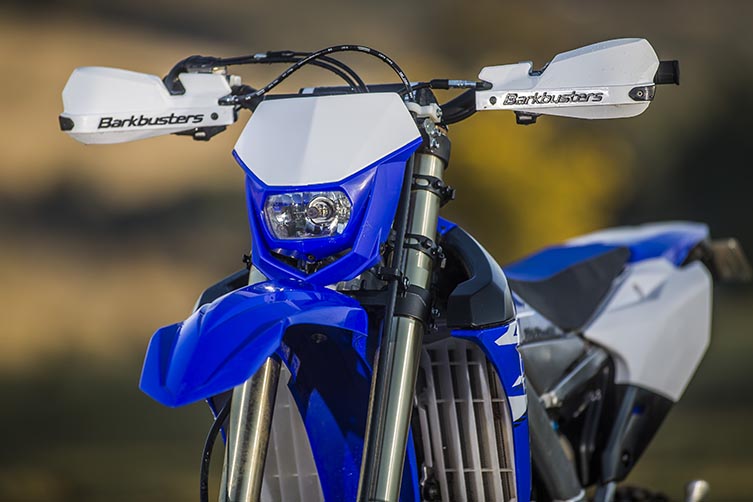
While some old trailriders will no doubt rue the move away from the excellent hand protection offered by the full-wrap Barkbusters hand guards, they’ll be happy to note that the 2018 machine gets bolstered protection in other areas. The exhaust pipe’s heat shield has been extended, and the exposed fuel line and electrical wiring next to the upper shock mount is now protected by a guard that fastens to the RHS subrame. It encloses the gap between the subframe’s two alloy spars, and helps safeguard against sticks and water ingress.
5. COMPONENTRY & LOOKS
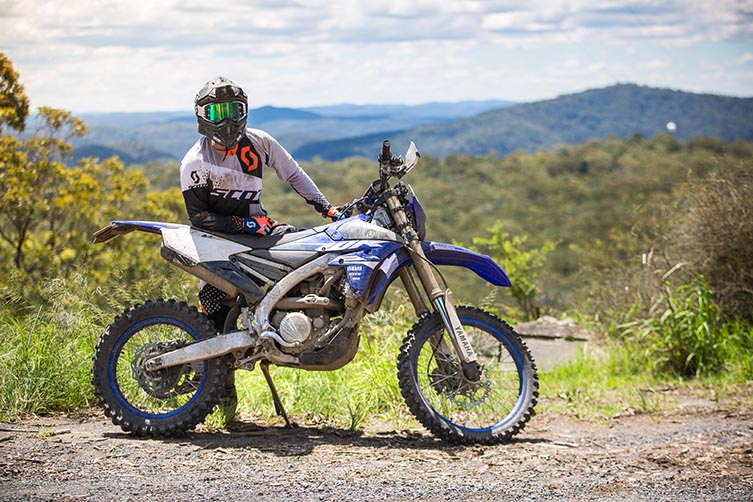
It’s fair to say that, like the other Japanese brands, Yamaha has been playing catch-up to the hard-nose European enduro weapons when it comes to trick componentry. But they’ve made a fair bit of headway in this respect. Also, Yami has produced an LE (Limited Edition) version of the bike in recent years, which sell at a small premium to the standard blue model.
And the Hurricane Hannah yellow WR450F released in 2016 to celebrate the brand’s 30th anniversary was hard not to ogle at. Thankfully, the 2018 WR250F looks like someone actually cared about the graphics and how coherent its white, black and blue panels appear.
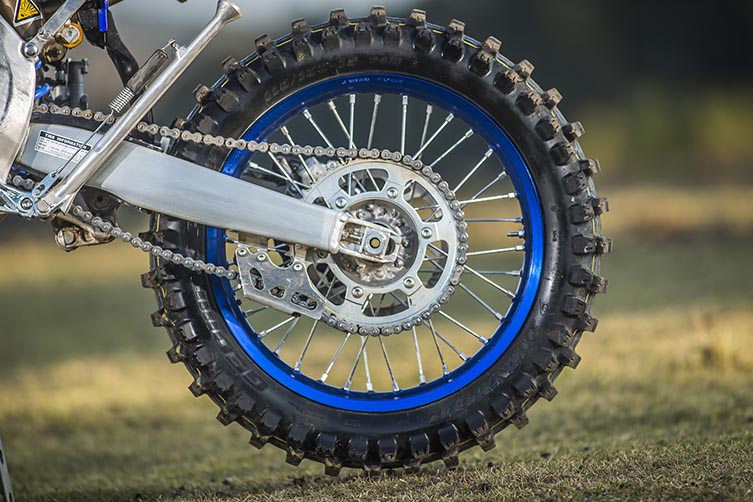
And the all-new blue-anodised rims are trick (and reminiscent of the Yamaha’s factory MXers ridden by Chad Reed last year, and Justin Barcia and Cooper Webb this season). And the titanium finish on the flash Akrapovic exhaust system that Brian has fitted to our project bike is the icing on the cake. Not sure about those teal-coloured Scott grips he’s fitted, though. And I kind of miss that bronze-coloured clutch cover.
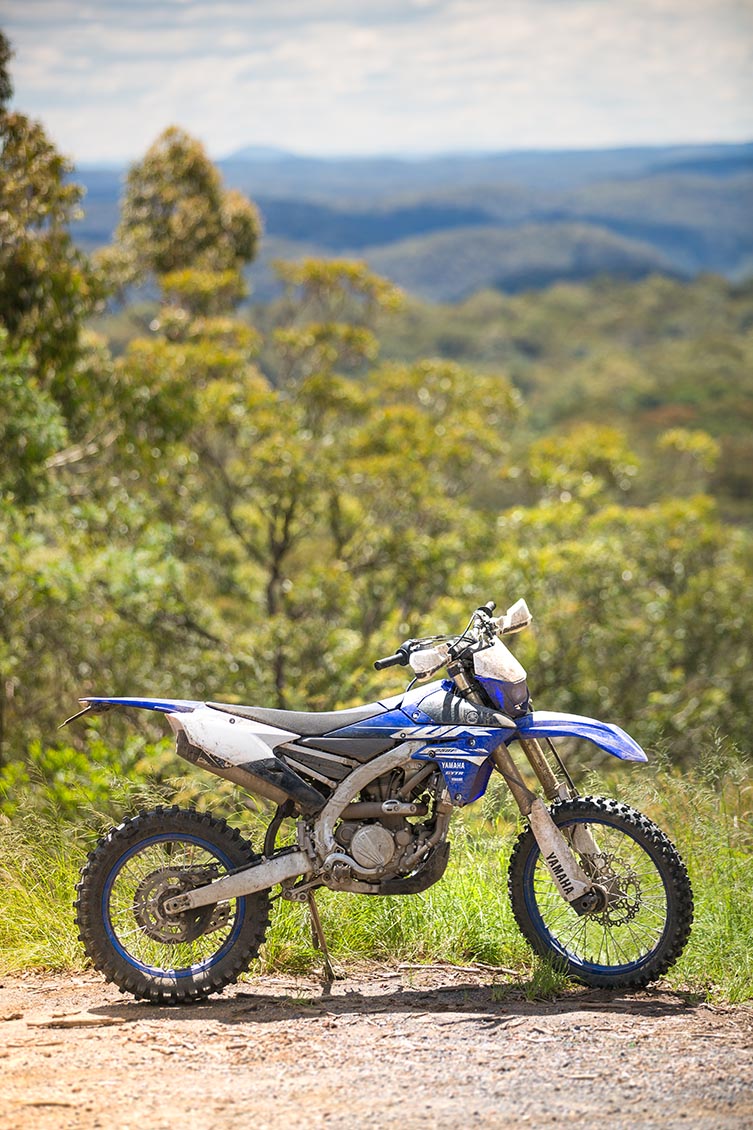
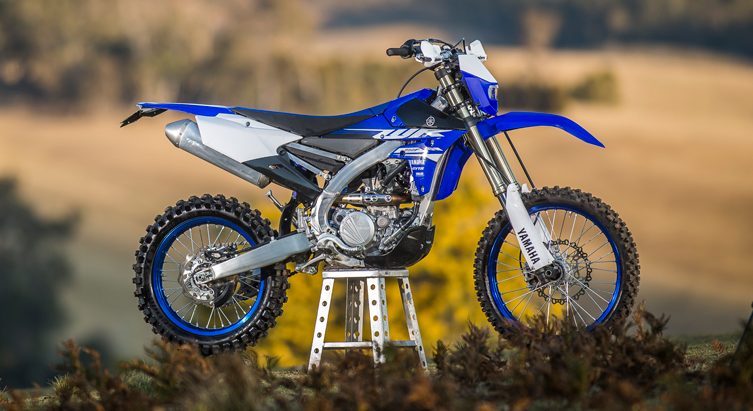

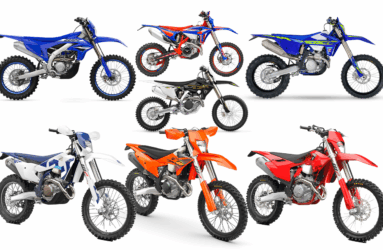


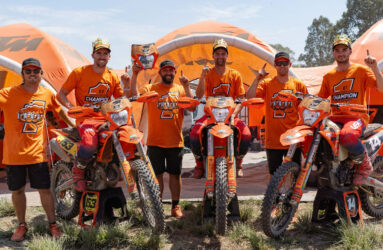

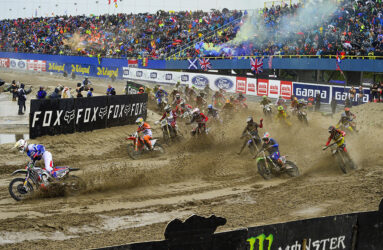
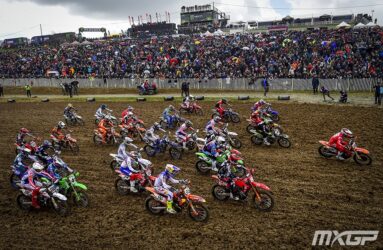
Be the first to comment...